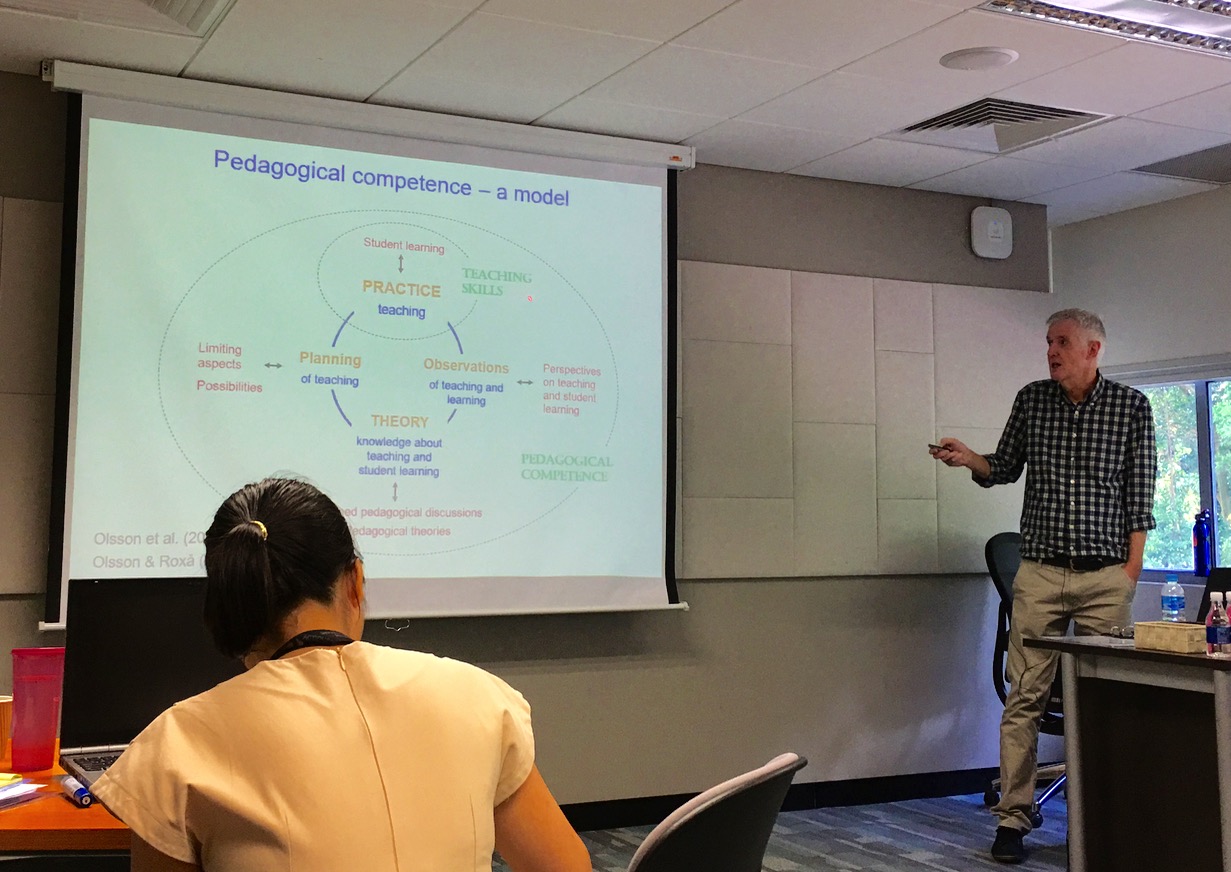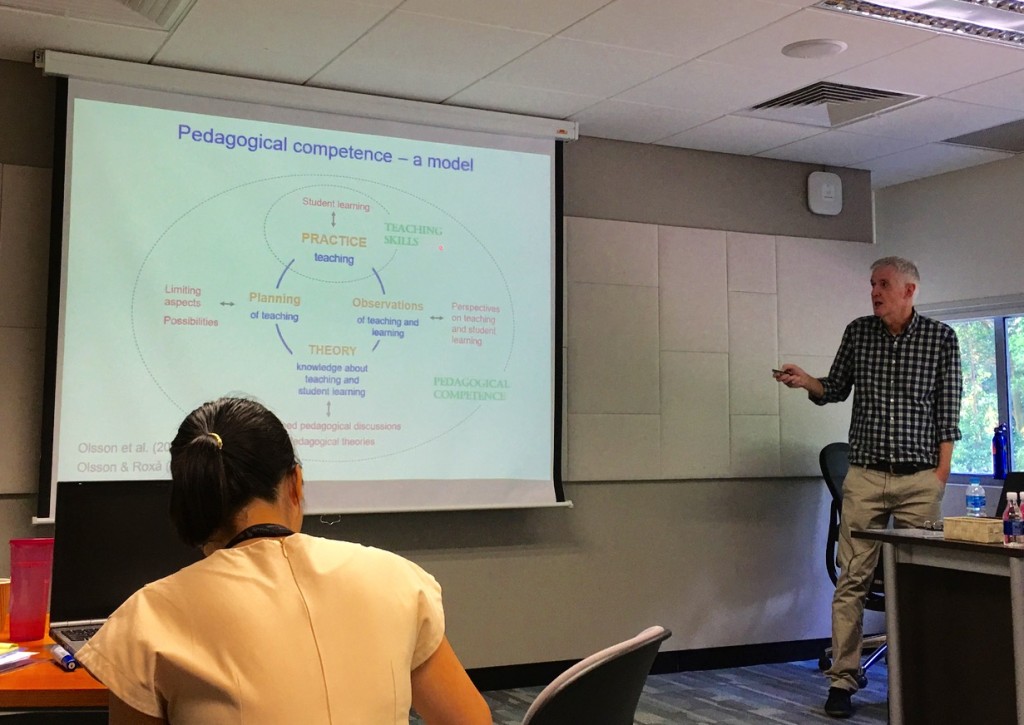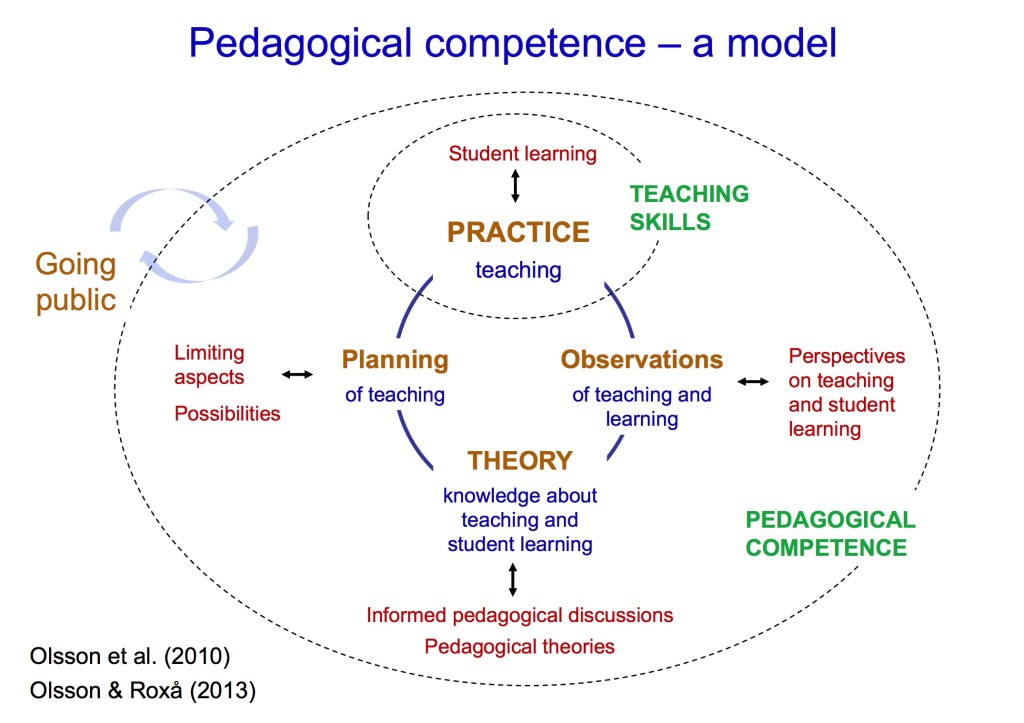During late January, NUS hosted Thomas Olsson, from Lund University in Sweden, to discuss Academic Portfolios, and a broader range of topics related to SoTL and “Pedagogical Competence” – a term that describes a larger sphere of activity that includes not just the practice of one’s teaching, but a larger range of activities that includes observations of one’s own and other’s teaching, grounding in theory, and planning for more ambitious projects that links one’s practice to larger communities of practice – either disciplinary societies, or larger groups of faculty outside of one’s immediate department.
Thomas offered a wide range of discussions that included meetings with academic developers across Singapore, members of the NUS Teaching Academy, and a focused discussion of Portfolios and SoTL over a week. During the meetings we discussed the role of Scholarship of Teaching and Learning (SoTL) in promoting excellence in teaching. Thomas helped define what scholarship means in this context – and described a process of going beyond individual experience and institutions toward a more systematic set of observations of student learning, which can generate new knowledge that can be replicated and built upon. This effort can also be documented, made public, and subject to peer review – just as other scholarship in disciplines is done.
The progression from personal and local experience and knowledge toward a more public form of teaching is essential, Thomas argued, and he has made venues such as a pedagogical conference part of his work at the Engineering School at Lund. Within this conference are ~25 presentations from a wide range of faculty, who submit short papers that enter into a database. Over the years this database has become a valuable repository of the teaching culture within Lund University, and allows for a transfer of knowledge across time and courses. The program includes recordings of the talks which are placed online, as well as a “concept circuit training” where short discussions about teaching ideas.
Thomas also described how one can produce a more dynamic SoTL profile within faculty. The progression typically starts with a course that provides an “advanced pedagogical project” – which can be presented at a conference. This publication can lead to funding, which in Sweden is generously supported. The goal is to provide ways for sharing knowledge and experience – and to connect that sharing into public and scholarly presentations and publications. The goal is a “scholarly teacher” who is able to refer to literature on T&L, perform systematic observations, evaluate learning outcomes, obtain peer evaluation of their performance, as well as being an expert in their discipline and conducting their work as a professional. This definition draws from work from Trigwell et al, 2000; and Shulman, 2000. Along the way, the professor is able to break out of what Shulman calls “the island of pedagogical solitude.” Olsson also described four functions of the Scholarship of Teaching – to provide a basis for discovery, integration, application and to improve teaching. This structure was proposed by Boyer (1990) in his work “Scholarship Reconsidered.”
In addition to presentations in scholarly venues, the development of a Teaching Portfolio is a key ingredient in making teaching visible. At Lund University the portfolio is evaluated based on criteria that focuses on student learning (which requires teaching based on a learning perspective, integration between theory and practice, and a practice based on sound relation to students). The subject should be taught in ways that employ strategies to support students’ work toward increasingly complex and useful knowledge. The portfolio also documents the professional development as a teacher over time, with an effort to consciously and systematically develop students’ learning, and hopefully also includes a scholarly approach to teaching and learning that includes a reflection based on practice and educational theory, and an effort to integrate research into teaching and to “making findings public with a purpose of collaboration and interaction.” The goal of the process it to develop “pedagogical competence” which is a mix of activity that goes beyond one’s own classroom to integrate with research and the larger SoTL community, to make the results of your pedagogical practice accessible to others, and to enable it to be built upon or scaled up. The diagram below shows the schema for pedagogical competence.
The teaching portfolio should include documentation of your teaching practice, along with a description and analysis of that practice, along with evidence that includes “artefacts from teaching and learning.” Thomas described the process as one of “concretion” – which describes significant teaching and learning situations, with a description of how you assessed and responded to the situation. A very useful breakdown in terms of “action,” “consequences,” and “results” was proposed to give a more complete description within the portfolio. The portfolio includes a description of the teaching practice along with concrete examples from the pedagogical practice. A good portfolio will not only describe what happened, but why, and explain observations, assessments, and a future vision of teaching. Within Lund University, portfolios are evaluated and they incentive excellence by giving grant funding to departments with excellent faculty (as judged by teaching portfolios) as well as modest raises for faculty who produce excellent portfolios.




